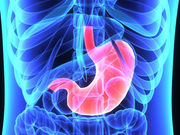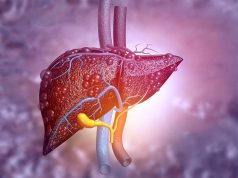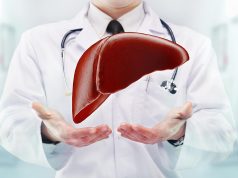After adjustment for BMI and other metabolic factors the association disappeared
MONDAY, Dec. 11, 2017 (HealthDay News) — Nonalcoholic fatty liver disease (NAFLD) is not associated with increased risk of incident reflux esophagitis after adjustment for variables, including body mass index (BMI), according to a study published online Nov. 12 in the Journal of Gastroenterology and Hepatology.
In an effort to examine whether NAFLD is associated with incident reflux esophagitis, Yang Won Min, M.D., Ph.D., from Sungkyunkwan University School of Medicine in Seoul, South Korea, and colleagues conducted a cohort study involving 34,063 men and women without reflux esophagitis or other upper gastrointestinal disease. Participants underwent health check-up examinations between January 2003 and December 2013.
The researchers found that the prevalence of NAFLD was 33.2 percent at baseline. The cumulative incidences of reflux esophagitis were 9.6 and 13.8 percent for participants without and with NAFLD, respectively, during 153,520.2 person-years of follow-up (P < 0.001). Compared to those without NAFLD, participants with NAFLD had an age- and sex-adjusted hazard ratio of 1.15 for the risk of reflux esophagitis development (95 percent confidence interval, 1.07 to 1.23; P < 0.001). After adjustment for BMI and other metabolic factors, the association disappeared (hazard ratio, 1.01; 95 percent confidence interval, 0.94 to 1.09; P = 0.79). No significant correlation was seen between NAFLD severity and risk of developing reflux esophagitis in multivariable adjusted models.
“NAFLD is not independently associated with the risk of the development of reflux esophagitis, but rather reflux esophagitis is primarily the consequence of increased BMI commonly associated with NAFLD,” the authors write.
Copyright © 2017 HealthDay. All rights reserved.








